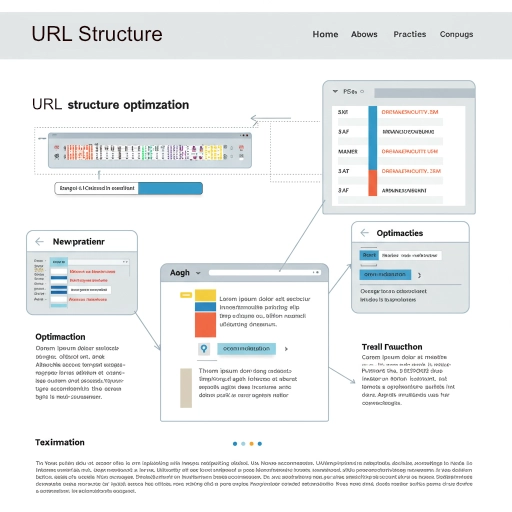
URLs themselves are a relatively minor ranking factor compared to elements like content quality and backlinks. But a well-optimized URL can improve your site’s visibility in search results, make it easier for users to understand your content, and even increase click-through rates. This is mainly because URLs influence SEO through their impact on user behavior.
What is URL Optimization?
URL optimization is part of On-Page or can be considered a Technical SEO enhancement. You should be trying to creating URLs that are both user-friendly and search engine-friendly. Which means using short, descriptive URLs that accurately reflect the content of the page, while also incorporating relevant keywords to help search engines understand what the page is about.
Before diving into the details, let’s break down the anatomy of a URL. A URL consists of several components:
- Protocol: This indicates how the browser connects to the web server (e.g., HTTP or HTTPS). HTTPS is preferred as it adds an encryption layer for security.
- Authority: This tells the browser who owns the website and where to find it. It includes:
- Subdomain: A prefix to the main domain (e.g., “www.” or “blog.”).
- Domain: The unique name of your website (e.g., “example.com”).
- Top-level domain (TLD): The extension at the end of your domain (e.g., “.com”, “.org”, or country-specific TLDs like “.uk”).
- Path: This directs the browser to a specific page on the website. It includes:
- Subfolders: Folders within the main directory that organize related content (e.g., “/blog/” or “/products/”).
- Slug: The final part of the URL that identifies the specific page (e.g., “/url-optimization”).
- Query parameters: These are added to the end of a URL to specify certain content or actions (e.g., “?sort=price”).
Why is URL Optimization Important?
URL optimization is important because it can:
- Improve your site’s visibility in search results: Search engines use URLs to understand the content of a page. By including relevant keywords in your URLs, you can help search engines index your pages correctly and rank them higher for relevant searches.
- Enhance user experience: Short, descriptive URLs are easier for users to read and understand. This can improve the user experience on your site and make it more likely that users will click on your links.
- Increase click-through rates: When your URLs accurately reflect the content of your pages, users are more likely to click on them in search results. This can lead to more traffic to your site.
- Build trust and credibility: A well-structured URL can make your site look more professional and trustworthy to users.
- Provide opportunities for “naked” URL backlinks: A clear and concise URL can be used as a standalone link (without anchor text) in content or on social media, potentially earning you valuable backlinks.
How URL Structure Affects SEO
The structure of your URLs can have a significant impact on your site’s SEO. Here’s how:
- Crawlability and Indexing: Search engines use bots called “crawlers” to explore the web and index pages. A clear and logical URL structure makes it easier for these bots to understand your site’s content and index it correctly. This also affects crawl depth, which refers to how many clicks it takes for a crawler to reach a specific page from the homepage. A shallow crawl depth (fewer clicks) is generally preferred for SEO.
- Click-Through Rate (CTR): Descriptive URLs can improve CTR by giving users a clear idea of what to expect before they click. This user engagement can indirectly influence your rankings.
- Keyword Relevance: Including relevant keywords in your URL path can signal to search engines that your page is relevant to specific search queries.
- Page Rank: SEO-friendly URLs can improve your PageRank, which is Google’s way of determining the relevance of web pages to search queries.
- Avoiding Crawler Issues: Overly complex URLs, especially those with multiple parameters, can create problems for crawlers by generating unnecessarily high numbers of URLs that point to identical or similar content. This can dilute your site’s SEO value.
- Internal Linking: A well-structured URL makes it easier to create effective internal links, which help search engines understand the relationships between different pages on your site.
- Redirects: When changing URLs, 301 redirects are important for preserving link equity (the value passed from one page to another through links) and preventing 404 errors (page not found). Try to avoid excessive redirects as they can slow down your site. Each page should be accessible without any redirect loops.
It’s important to note that changing your URL structure can also temporarily affect your SEO, as search engines need time to re-crawl and re-index the new URLs. If you do change your URLs, it’s crucial to use 301 redirects from the old URLs to the new ones to preserve link equity.
Related Posts
- This is the end of the road. Click the Read Our Blogs button below to get back to the main blogs section.
Frequently Asked Questions about URL Optimization
Listed below are some of the main areas you should have an understanding on about URL Optimization.
What is a URL
URL stands for Uniform Resource Locator. It’s essentially the address of a specific page or resource on the internet for websites.